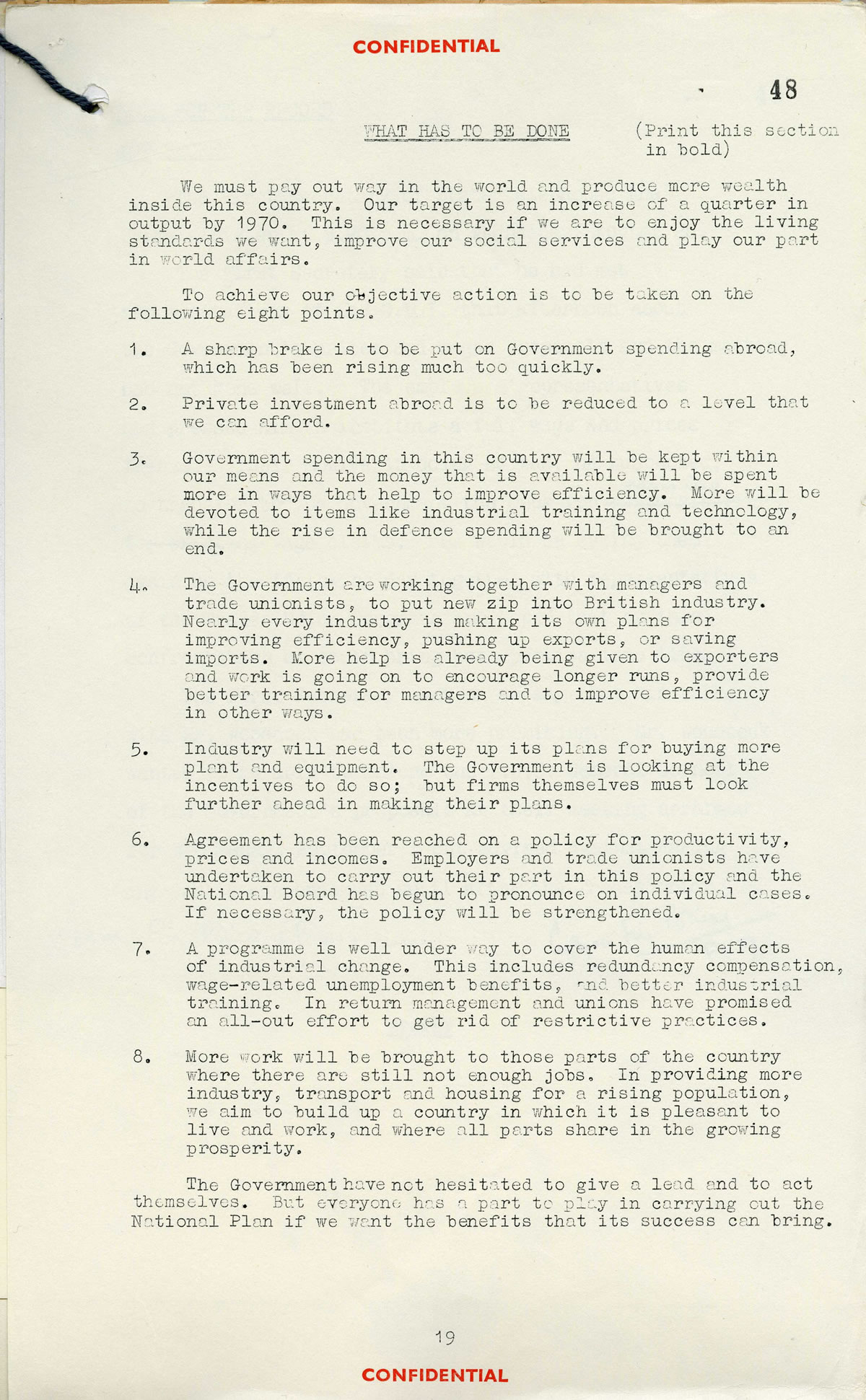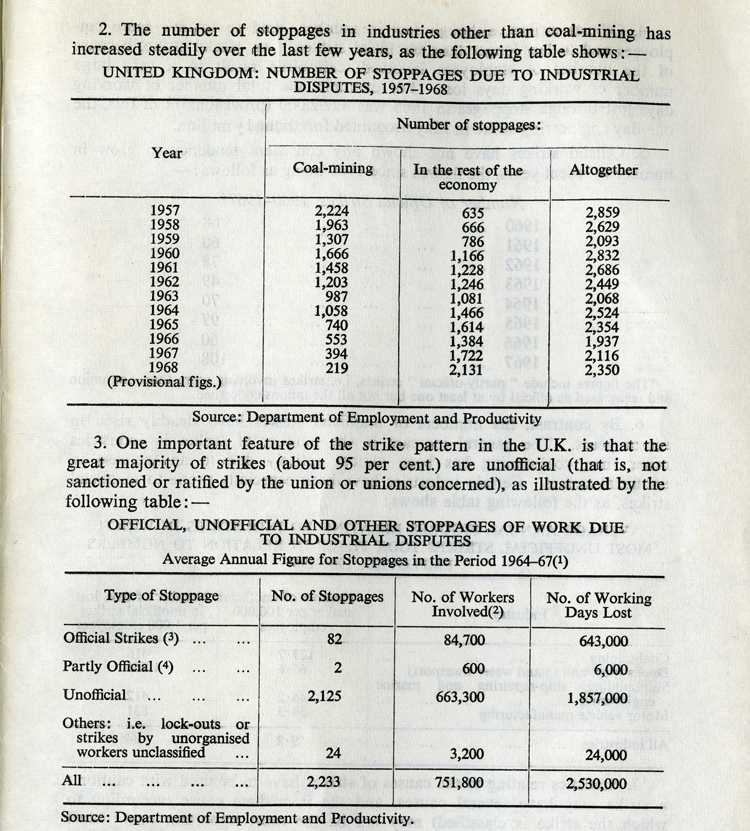OCR Specification focus:
‘Labour victory 1964; Wilson as leader 1964–1970; economic problems and policies; relations with the Trade Unions.’
The Wilson government of 1964–1970 was marked by optimism yet constant struggle with Britain’s economic weaknesses, growing union militancy, and the challenge of balancing modernisation with consensus politics.
Labour Victory in 1964
The Labour Party returned to power in October 1964 under Harold Wilson, after 13 years of Conservative government. Labour won narrowly, with a parliamentary majority of only four seats.
Reasons for Victory
Conservative fatigue: Following scandals such as the Profumo Affair (1963) and economic stagnation, the electorate sought change.
Wilson’s modern image: Wilson projected himself as the leader of a new, “technocratic” Britain, associated with the ‘white heat of technology’, a phrase highlighting scientific and industrial modernisation.
Economic concerns: Britain faced persistent balance of payments deficits, making the public receptive to Labour’s promise of better planning and economic management.
Balance of payments deficit: A situation where a country imports more goods, services, and capital than it exports, leading to financial instability.
Wilson promised to merge scientific innovation with social reform, portraying Labour as the party of progress and planning.
Wilson as Leader 1964–1970
Wilson’s leadership was marked by pragmatism rather than ideology. He portrayed himself as a man of the people, in contrast to the aristocratic image of his predecessors, and emphasised classless meritocracy.
Leadership Style
Pragmatic: Wilson was skilled at maintaining party unity, balancing the left and right wings of Labour.
Cautious moderniser: Although he spoke of radical technological transformation, many of his policies were restrained by economic difficulties.
Media savvy: He was the first British Prime Minister to fully embrace television, making himself relatable to voters.
However, Wilson’s style could also appear indecisive, as he often postponed difficult choices to preserve unity.
Economic Problems
The 1964 Labour government inherited a fragile economy. Britain’s long-term decline relative to competitors such as West Germany and Japan was evident.
Structural Weaknesses
Over-reliance on traditional industries (coal, textiles, shipbuilding).
Lack of investment in modernisation compared to European competitors.
Persistent inflation and slow growth undermined confidence in sterling.
Inflation: A sustained increase in the general price level of goods and services, leading to a decline in purchasing power.
Key Crises
1964 balance of payments deficit: Estimated at £800 million, this immediately constrained government spending plans.
Sterling crises: The pound came under repeated pressure, forcing Wilson to adopt deflationary policies.
Devaluation of the pound (1967): Wilson reduced the pound’s value from 2.40, hoping to boost exports. However, this damaged Labour’s credibility.
Devaluation: A deliberate downward adjustment of a country’s currency relative to others, intended to make exports cheaper and imports more expensive.
Economic Policies
Wilson’s government aimed to solve Britain’s long-standing economic malaise through a mixture of planning and market management.
National Plan (1965)
Launched under George Brown, head of the new Department of Economic Affairs (DEA).
Target: 25% increase in national production by 1970.

A National Archives image linked to Labour’s National Plan (1965), associated with the Department of Economic Affairs. The scan features the heading “WHAT HAS TO BE DONE,” exemplifying the Plan’s technocratic tone and growth ambitions. It focuses on planning aims rather than outcomes, complementing the bullet points in the notes. Source
Aimed at co-ordinating investment and modernising industry.
Failed due to lack of cooperation between government, employers, and unions, and was abandoned by 1967.
Deflationary Measures
To maintain confidence in sterling, Wilson often resorted to:
Tax rises
Public spending cuts
Wage restraint policies
This contradicted Labour’s election promises and alienated both workers and left-wing supporters.
Industrial Modernisation
Investment in infrastructure and technology was encouraged.
Focus on scientific innovation aligned with Wilson’s “white heat” rhetoric.
However, limited resources and economic pressures restricted implementation.
Relations with the Trade Unions
Trade unions were central to Labour politics, but their growing assertiveness caused significant tensions.
Traditional Relationship
Labour was historically linked to unions through funding and organisational support.
Wilson initially sought “voluntary wage restraint”, hoping unions would cooperate with government planning.
Rising Militancy
By the late 1960s, strikes and unofficial action increased, undermining government policy.

A National Archives scan from the appendix to In Place of Strife (1969) showing annual stoppages due to industrial disputes and the predominance of unofficial action. It provides contemporary evidence for the surge in strikes that destabilised wage restraint. The table spans 1957–1968, so it includes years outside Wilson’s 1964–70 term, but this broader run helps show the late-1960s spike. Source
Key disputes: strikes in the docks and car industry, causing disruption to exports.
In Place of Strife (1969)
Proposed by Barbara Castle, this white paper aimed to reform union practices by introducing:
Compulsory strike ballots.
Cooling-off periods before industrial action.
Fines for unlawful strikes.
The proposals split the Labour Party, angered unions, and were ultimately abandoned to avoid revolt.
This episode damaged Wilson’s authority and revealed Labour’s inability to control its union base.
Overall Evaluation of Wilson’s Government
Between 1964 and 1970, Wilson managed to keep Labour in office for a full term despite serious challenges. His government’s record was mixed:
Successes included a modern, dynamic image and modest social reforms.
Failures were concentrated in economic management, the devaluation crisis, and the breakdown of trust with the unions.
By 1970, Labour’s credibility on economic competence was severely weakened, contributing to its electoral defeat by Edward Heath’s Conservatives.
FAQ
George Brown, as head of the Department of Economic Affairs, was the architect of the National Plan. He worked to coordinate business, unions, and government policy.
Brown’s reputation for energy and determination helped give the Plan initial credibility, but his erratic personal style and tensions with the Treasury undermined its effectiveness.
Although devaluation was intended to boost exports, Wilson insisted beforehand that the measure would not happen, framing it as a defeat if it did.
When the pound was reduced from $2.80 to $2.40, the government’s honesty was questioned. Voters and international investors lost confidence, reinforcing the stereotype that Labour governments mismanaged the economy.
Wilson was adept at using television to project confidence and authority, particularly in crises.
However, his tendency to reassure the public that “the pound in your pocket” would not be devalued (1967) backfired, making him appear misleading once devaluation occurred.
They believed compulsory strike ballots and legal restrictions undermined union autonomy.
Fines for unlawful strikes were viewed as punitive and a betrayal by Labour.
Many saw it as the government siding with employers rather than protecting workers.
This opposition hardened union distrust of Wilson’s government, even after the proposals were dropped.
Although Wilson’s government introduced measures such as expanding comprehensive education and reforming divorce laws, economic constraints limited ambitions.
Repeated sterling crises forced cuts in spending plans. Resources that might have gone to welfare expansion were diverted into maintaining currency stability and appeasing international creditors.
Practice Questions
Question 1 (2 marks):
What was the main purpose of Harold Wilson’s National Plan of 1965?
Mark Scheme:
1 mark for identifying that it aimed to increase national production/growth.
1 mark for noting it sought to modernise and coordinate the economy/industry through planning.
Question 2 (6 marks):
Explain two reasons why Harold Wilson’s government faced difficulties in managing relations with the trade unions between 1964 and 1970.
Mark Scheme:
Up to 3 marks per reason.
1 mark for identifying a valid reason.
1 mark for explanation of how/why it caused difficulties.
1 mark for providing specific detail, example, or context.
Possible answers:
Growing militancy and unofficial strikes (1 mark). These undermined voluntary wage restraint and government planning (1 mark). Example: Strikes in the docks and car industry disrupted exports (1 mark).
In Place of Strife proposals, 1969 (1 mark). These reforms angered trade unions and split the Labour Party (1 mark). Example: Castle’s white paper suggested compulsory strike ballots and fines, which unions rejected (1 mark).
(Maximum 6 marks; award marks for any other valid points consistent with the specification.)

